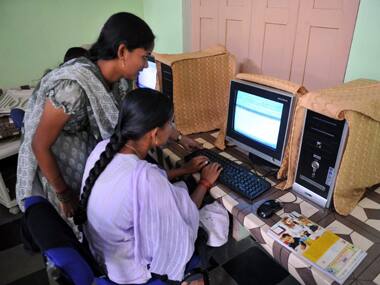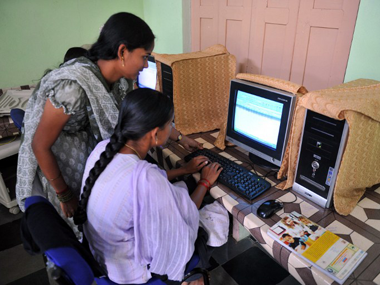In the 1980s, FMCG major Hindustan Lever (now Hindustan Unilever) formulated a strategy to capitalise on the large rural opportunity - give consumers a variety of mass market products in small packs and sachetsat discounted price. It clicked and the company witnessed exponential growth in the rural market.Ever since, the magical formula has been used by many, most recent being the telcos, which are betting billions on the hinterland.
The strategy helped HUL improve its profitability. At same time, the products were affordable to the rural consumer. According to Sanjeev Bhasin, General Manager and CEO of Development Bank of Singapore (DBS), banks should now tie-up with telecom companies’ to penetrate their rural base. After all, this is the most cost-effective tool.
“The biggest challenge with rural banking earlier was to remain profitable. Today, that problem can be solved by mobile banking,” Bhasin said at theAnnual Consulting “Insight 2013” conference organised by B-school XLRI in Mumbai. There is better connectivity in remote areas today than a decade ago.
[caption id=“attachment_784609” align=“alignleft” width=“380”]
 Agencies[/caption]
Agencies[/caption]
As banks develop strategies for giving customers access to their accounts through cell phones and other mobile devices, they should also regard this emerging platform as a potential catalyst for generating operational efficiencies and as a vehicle for new revenue sources.
While, state-run banks have been the leaders in rural banking so far, their private sector counterparts such as HDFC Bank, ICICI Bank and Axis Bank too are beginning to focus on a market which is believed to be worth thousands of crores.
State-run banks and micro-finance entities together enjoy an estimated Rs 60,000 crore business in the rural banking segment.Private banks have now started tapping this massive market afterregulatory clampdown weakened the microfinance sector.
Impact Shorts
More Shorts“In the last 30 years, maximum percentage growth for the FMCG sector has been from the rural sector. Banks can do the same by servicing villagers in a manner affordable to him,“Bhasin saidexplaining the rationale behind mobile banking.
According to a report by Centre for Strategic and International Studies, mobile banking is the cheapest way to reach rural customers. The report, quoting the RBI says, “while the government typically incurs a transaction cost of 12-13 percent, mobile banking brings the cost down to a mere 2 percent.”
In February 2010, the Bill & Melinda Gates foundation and the Consultative Group to Assist the Poor announced the “Mobile Money for the Unbanked Initiative”, with a $12.5 million grant to provide research funding for such initiatives, some of which are expected to take place in India.
Little wonder that regulators such as RBI and TRAI, several banks, mobile service providers and phone makers are joining hands to take m-commerce to the “unbanked” population.
For example, earlier this yearVodafone India and ICICI Bank launched a mobile banking service across the country called ‘M-Pesa’, which enables selected retailers to offer banking services to Vodafone customers, who are able to withdraw from or deposit to their ICICI account and transfer funds using their mobile device.
Eko, a mobile banking technology provider, has tied up with SBI and ICICI Bank to help people create a bank account and perform basic transactions at local Kirana shops.
Idea Cellular has a similar partnership with Axis Bank. Subscribers would be able to open ‘No-frills savings bank accounts’ at Idea’s retail outlets and avail basic banking services such as cash deposit, withdrawal and transfer. Idea is currently offering the remittance facility in the Dharavi-Allahabad corridor.
Bharti Airtel too has launched prepaid cash cards in India, Airtel Money service, which allows customers to use their mobile phones to make payments, is now available in Gurgaon and Airtel plans to launch it across the country.
Recently the Reserve Bank of India appointed a technical committee, comprising senior executives predominantly from the banking and mobile sectors, to examine the feasibility of implementing an SMS-based funds transfer service using an app that can support any type of mobile handset, including feature phones. The technical committee will also consider the advantages/challenges of having a single app across all handsets in an SMS encrypted environment. It will submit its report by the end of this year.
This new initiative is a welcome move as it will help promote mobile-based fund transfers even in rural areas.
The benefits of mobile banking are already showing. According to a KPMG study, the number of mobile banking transactions has doubled to 5.6 millionin January 2013 from 2.8 million in January 2012. “The value of these transactions increased three-fold to Rs625 crore during January 2013 from Rs 191 crore in January 2012.”
And Bhasin says the only way for banking to remain profitable is to invest in IT so as to ensure healthy competition without eating into the market share of others.
There are several technologies which have already come up in the market - low cost ATMs, point-of-sale terminals, mobile-based technologies etc. and are being experimented with.
)